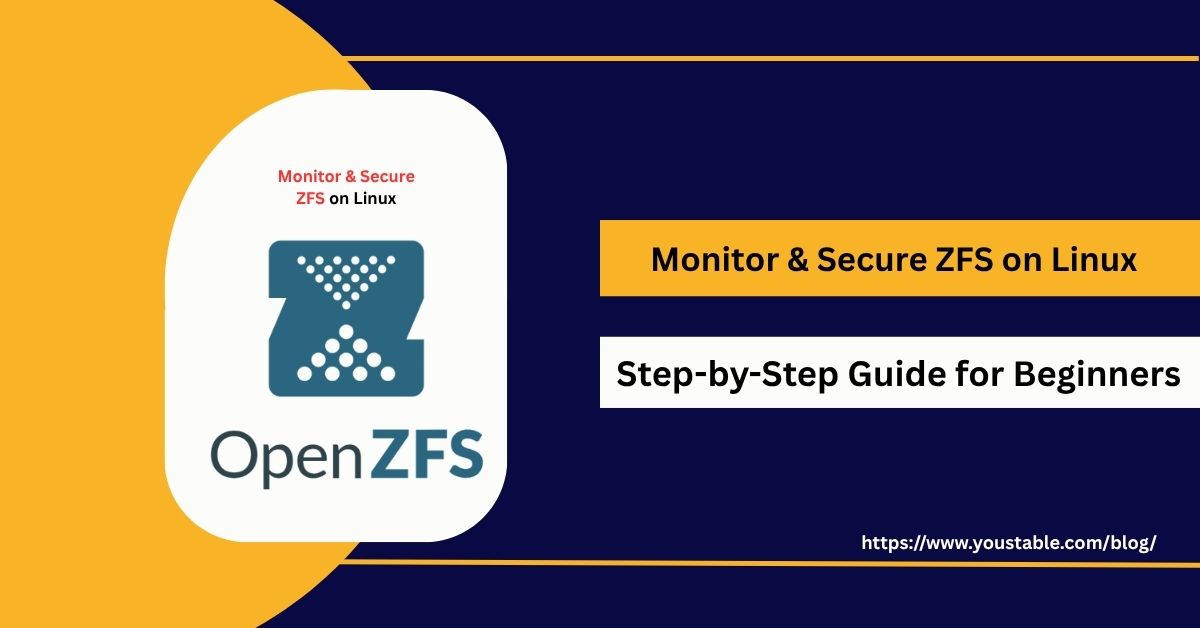A VPS (Virtual Private Server) provides a dedicated virtual environment on shared hardware, offering flexibility and control for hosting applications. While VPS hosting offers numerous advantages, it can be vulnerable if not properly secured. To maintain a reliable environment, it is crucial to monitor and secure VPS hosting on Linux.

Securing VPS involves hardening the OS, configuring firewalls, monitoring resource usage, managing user privileges, and following best practices. Administrators must combine proactive monitoring, automated policies, and strict configurations to protect the VPS, prevent unauthorized access, and ensure consistent uptime. This guide provides step-by-step strategies for securing VPS hosting effectively.
Why Securing VPS Hosting on Linux is Crucial?
VPS servers often host sensitive data and critical applications. If compromised, attackers can gain access to user data, modify configurations, or disrupt hosted services.
Implementing proper security ensures that only authorized users have access, resource usage is monitored, vulnerabilities are patched promptly, and services remain uninterrupted. Following best practices for secure VPS hosting on Linux maintains data integrity, enhances performance, and protects against attacks.
Step 1: Keep Linux System and Software Updated
Regular updates patch known vulnerabilities in the OS and installed software, reducing the risk of exploits.
- Update packages on Ubuntu/Debian:
sudo apt update && sudo apt upgrade -y- Update packages on CentOS/RHEL:
sudo yum update -y- Enable automatic security updates where possible.
Maintaining updated software ensures that security vulnerabilities are addressed promptly.
Step 2: Configure Firewalls and Security Rules
A properly configured firewall protects your VPS from unauthorized access.
- Use UFW (Ubuntu/Debian) or CSF (CentOS) to manage firewall rules.
- Allow only essential ports (SSH, HTTP, HTTPS) and block unused ones:
sudo ufw allow 22/tcp
sudo ufw allow 80/tcp
sudo ufw allow 443/tcp
sudo ufw enable- Limit SSH access to trusted IPs.
Firewall configurations minimize attack surfaces and prevent unauthorized connections.
Step 3: Enforce Secure SSH Access
SSH is the primary access point for VPS administration. Securing SSH prevents unauthorized server access.
- Disable root login:
sudo nano /etc/ssh/sshd_config
PermitRootLogin no- Use SSH key authentication instead of passwords.
- Change the default SSH port for additional security.
Secure SSH reduces the risk of brute-force attacks and unauthorized server access.
Step 4: Monitor Resource Usage
Monitoring CPU, RAM, and disk usage ensures that your VPS operates efficiently and helps detect suspicious activity.
- Use
top,htop, orglancesfor real-time monitoring. - Set up automated alerts using Nagios, Zabbix, or Prometheus.
- Identify unusual spikes that may indicate a security breach or malware activity.
Monitoring resource usage helps maintain performance and detect potential security issues early.
Step 5: Manage User Privileges and Accounts
Proper user management prevents unauthorized access and privilege escalation.
- Create individual user accounts for each administrator.
- Use
sudofor elevated privileges instead of sharing root credentials. - Regularly review and remove inactive users.
Restricting privileges ensures accountability and reduces the impact of potential breaches.
Step 6: Enable Logging and Auditing
Logging tracks activities, configurations, and security events on your VPS.
- Check logs in
/var/logfor unusual activities. - Enable auditing with
auditdfor sensitive commands. - Monitor logs via centralized tools like ELK Stack.
Proper logging provides visibility into the VPS environment and aids in incident response.
Step 7: Backup Data and System Configurations
Regular backups prevent data loss and facilitate recovery in case of attacks or system failures.
- Automate backups for critical data and configuration files.
- Store backups securely offsite or in cloud storage.
- Test restore procedures periodically to ensure reliability.
Reliable backups maintain business continuity and mitigate damage from security incidents.
Step 8: Apply Best Practices to Secure VPS Hosting on Linux
Following best practices ensures consistent and robust VPS security.
- Keep OS and software updated regularly.
- Configure firewalls and limit access to essential services.
- Enforce secure SSH policies.
- Monitor system resources and logs.
- Manage user privileges carefully.
- Automate backups and security checks.
- Regularly review configurations and remove unnecessary software.
Applying these practices ensures a secure, stable, and high-performance VPS environment.
Conclusion
A VPS server provides flexibility and control, but without proper security measures, it can be vulnerable to attacks and downtime. By updating software, configuring firewalls, securing SSH access, monitoring resources, managing users, enabling logging, and applying best practices, administrators can secure VPS hosting on Linux effectively.
A layered security approach safeguards sensitive data, ensures uninterrupted service, and maintains overall VPS reliability and performance.


